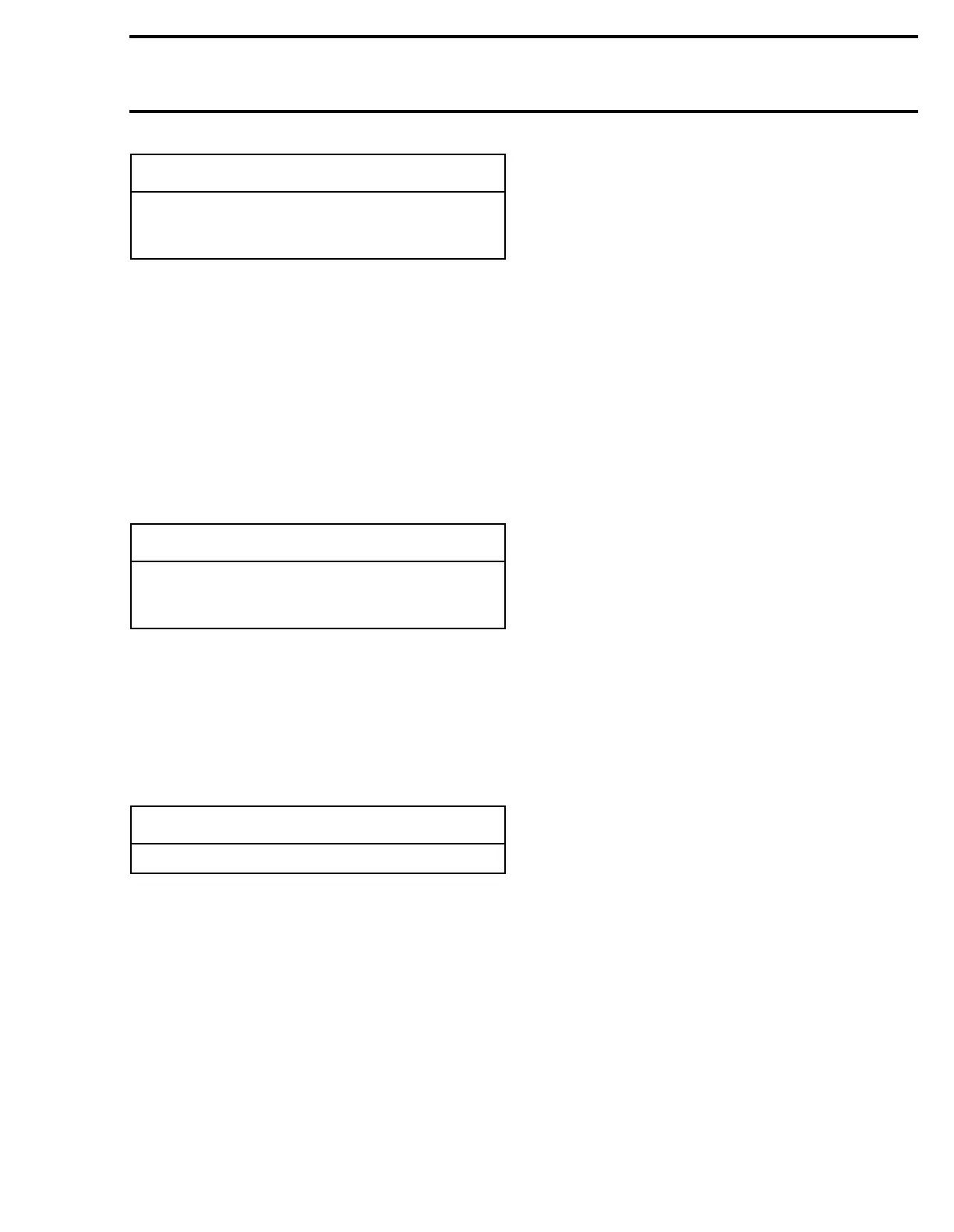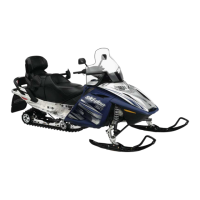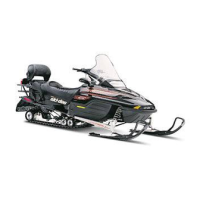Section 05 ELECTRICAL
Sub-Section 05 (BATTERY)
05-05-7
NOTE:
It is recommended to verify the bat-
tery charge once a month. If necessary, fully
charge battery.
SERVICING
Electrolyte Level
Since a battery has been activated (see above),
add distilled water to top up electrolyte.
TIPS FOR CHARGING A USED
BATTERY
For best results, battery should be charged when
the electrolyte and the plates are at room temper-
ature. A battery that is cold may not accept cur-
rent for several hours after charging begun.
Do not charge frozen battery. If the battery charge
is very low, the battery may freeze. If it is suspect-
ed to be frozen, keep it in a heated area for about
two hours before charging.
The time required to charge a battery will vary de-
pending some factors such as:
– Battery temperature: The charging time is in-
creased as the temperature goes down. The
current accepted by a cold battery will remain
low. As the battery warms up, it will accept a
higher rate of charge.
– State of charge: Because the electrolyte is
nearly pure water in a completely discharged
battery, it cannot accept current as well as elec-
trolyte. This is the reason the battery will not
accept current when the charging cycle first be-
gins. As the battery remains on the charger, the
current from the charger causes the electrolytic
acid content to rise which makes the electro-
lyte a better conductor and then, the battery
will accept a higher charging rate.
– Type of charger: Battery chargers vary in the
amount of voltage and current that they can
supply. Therefore, the time required for the bat-
tery to begin accepting measurable current will
also vary.
Charging a Very Flat or Completely
Discharged Battery:
Unless this procedure is properly followed, a good
battery may be needlessly replaced.
– Measure the voltage at the battery posts with
an accurate voltmeter. If it is below 10 volts, the
battery will accept current at very low rate, in
term of milliamperes, because electrolyte is
nearly pure water as explained above. It could
be some time before the charging rate increas-
es. Such low current flow may not be detect-
able on some charger ammeters and the
battery will seem not to accept any charge.
– Only for this particular case, set the charger to
a high rate.
NOTE:
Some chargers have a polarity pro-
tection feature which prevents charging un-
less the charger leads are connected to the
correct battery terminals. A completely dis-
charged battery may not have enough voltage to
activate this circuitry, even though the leads are
connected properly. This will make it appear that
the battery will not accept a charge. Follow the
charger manufacturer’s instruction telling how to
bypass or override this circuitry so that the charg-
er will turn on and charge a low-voltage battery.
– Since the battery chargers vary in the amount
of voltage and current they provide, the time
required for the battery to accept measurable
charger current might be up to approximately
10 hours or more.
– If the charging current is not up to a measurable
amount at the end of about 10 hours, the bat-
tery should be replaced.
-
CAUTION
Do not allow cleaning solution to enter bat-
tery interior since it will destroy the electro-
lyte.
-
CAUTION
Prior to charging the battery, always remove
it from the vehicle to prevent electrolyte
spillage.
◆
WARNING
Do not place battery near open flame.
'

